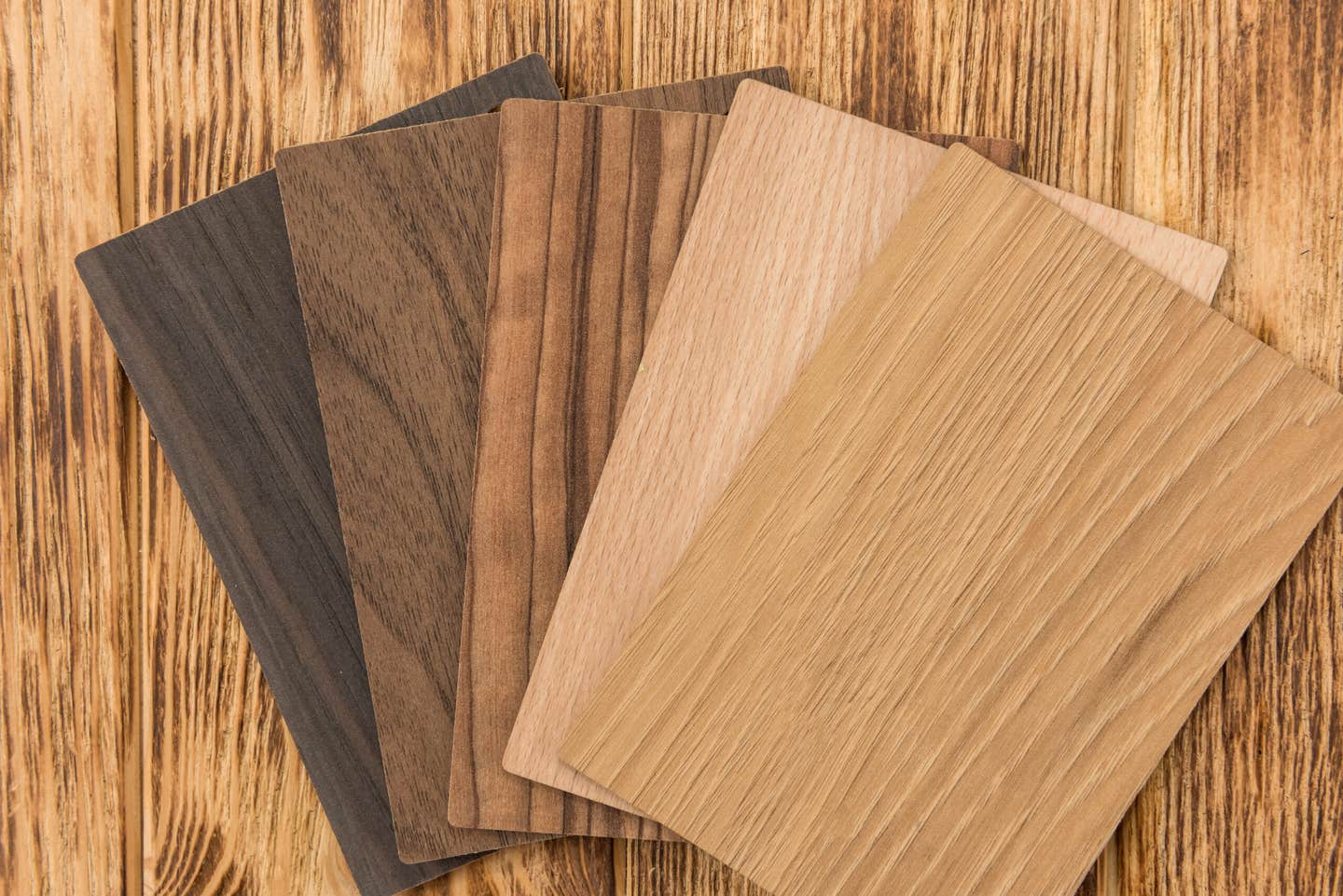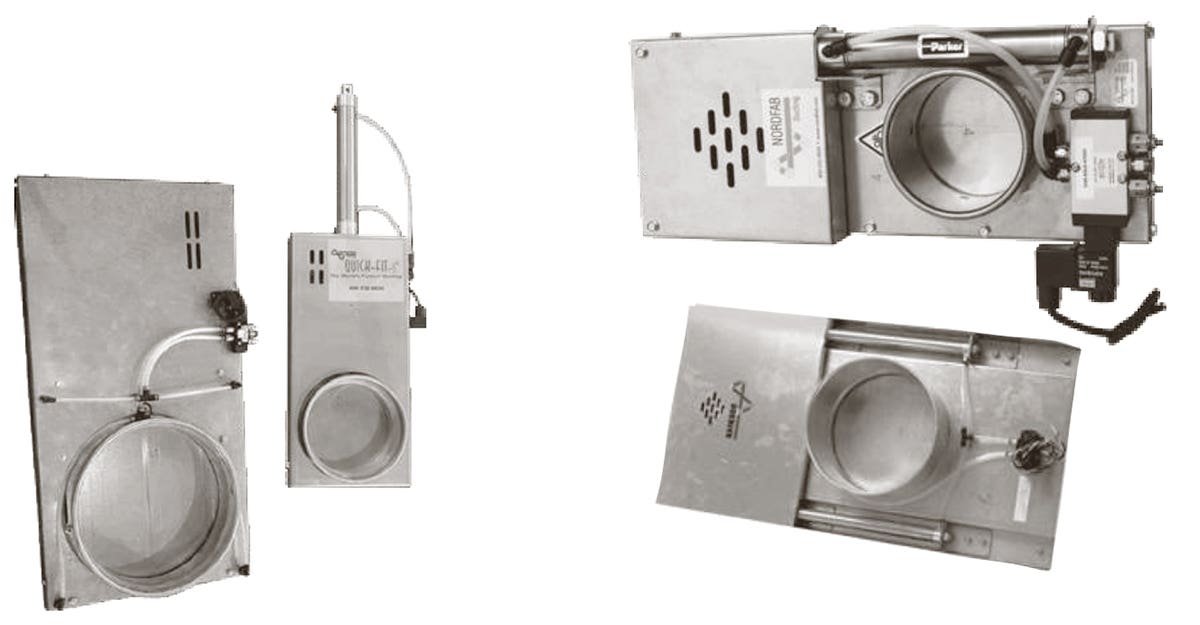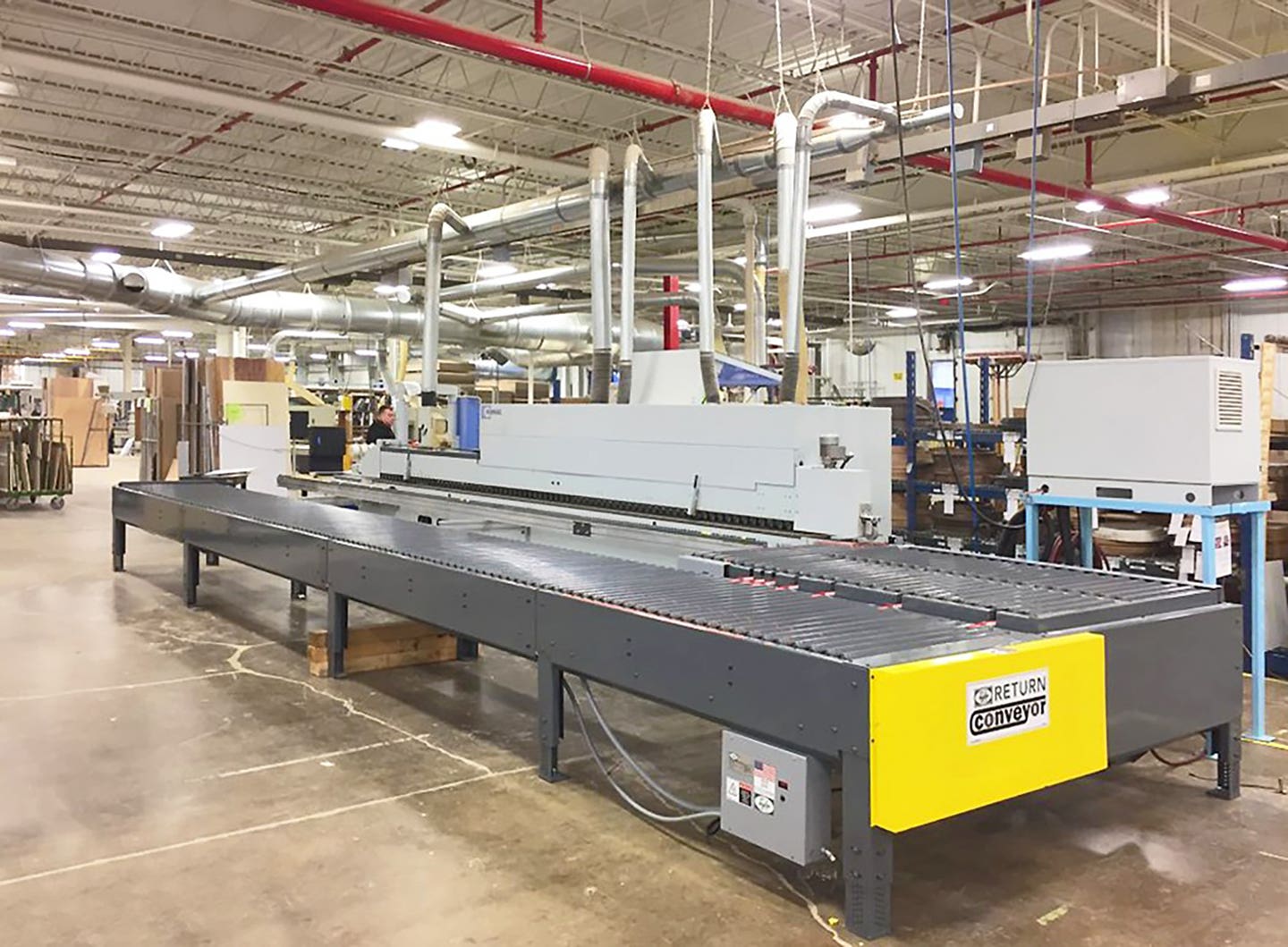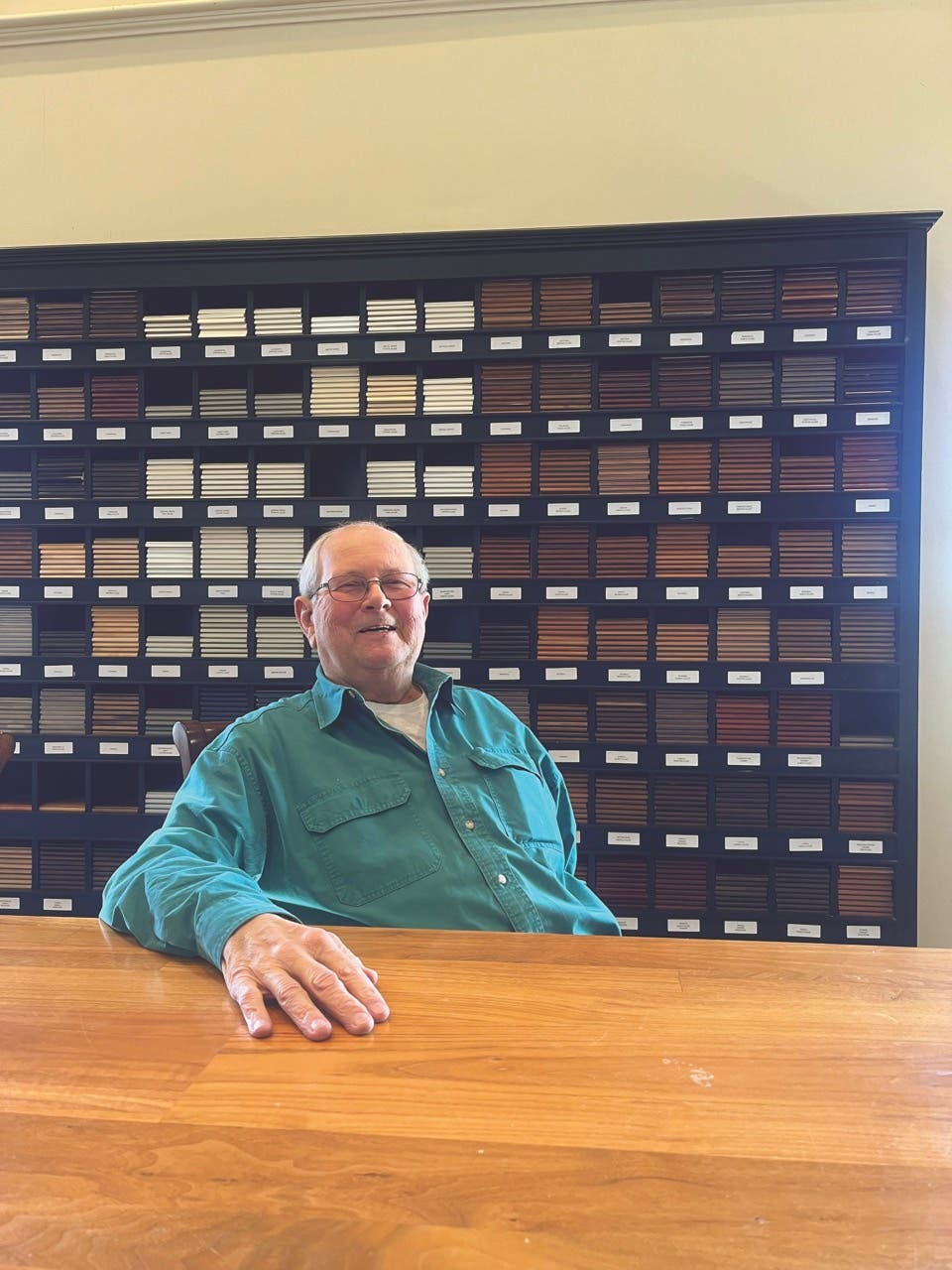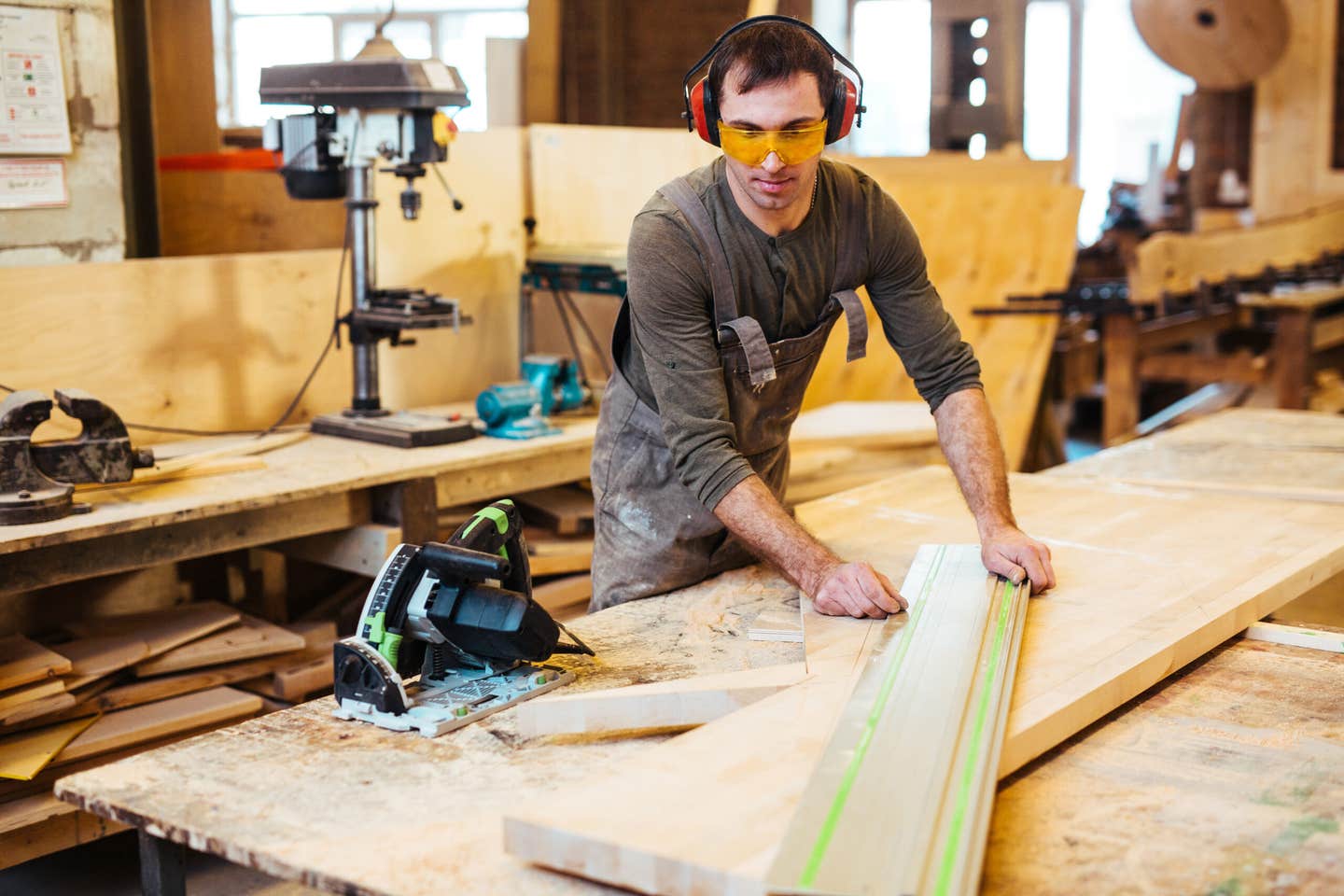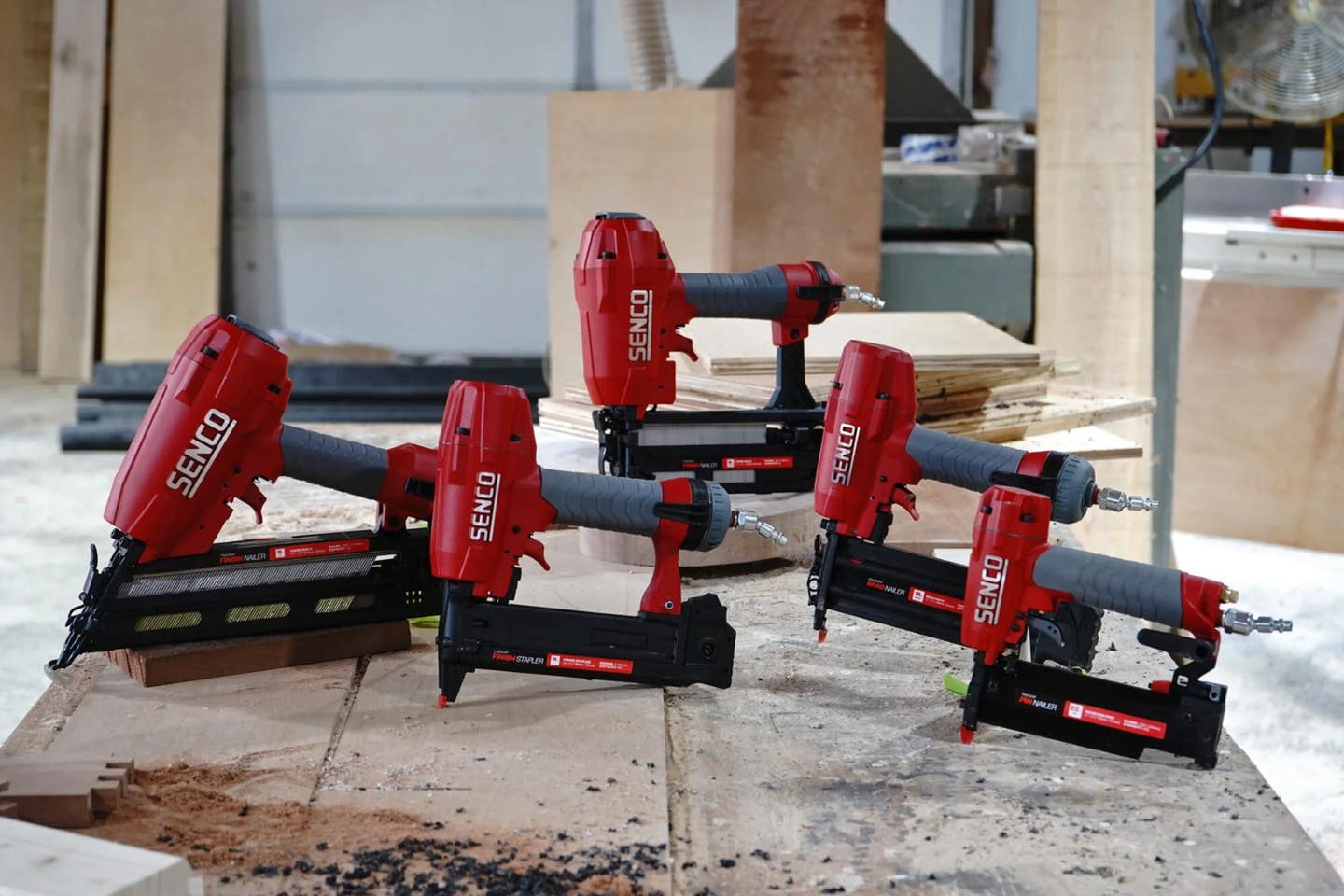Under the gun
Success in production finishing can sometimes come down to the quality and atomization of your spray system A spray gun is a simple tool. It uses air from a compressor…
Success in production finishing can sometimes come down to the quality and atomization of your spray system
A spray gun is a simple tool. It uses air from a compressor or turbine to turn a stream of liquid into a mist, a process called “atomizing,” and propel it onto a work surface.
High-pressure, compressed-air spray guns have been in use for a century. High volume, low pressure (HVLP) compressed-air and turbine-air guns have been in use for only about two decades.
Because of the reduced waste produced by the soft spray of low-pressure guns, these now totally dominate the market. It’s hard even to find high-pressure spray guns anymore, though there is nothing wrong with them. They still produce excellent results, just with more bounce-back and resulting waste.
Spray guns powered by a pump, called “airless,” are widely available. These guns put out a great deal more liquid spray than HVLP or high-pressure guns. But airless spray guns don’t atomize as well, so they produce more pronounced orange peel. For this reason, they aren’t used much for finishing interior woodwork, cabinets or furniture. Airless systems are used mostly for painting exteriors.
There are also spray guns that combine the high volume produced by the airless pump system with the better atomization produced by compressed air. These are called “air-assisted airless.” The Kremlin brand uses the name “airmix.”
How to choose
When I began finishing, choosing a spray system was easy because there was only one type: a high-pressure gun supplied by a compressor. Now there are five choices:
• A wasteful, but still effective, high-pressure gun and compressor
• A less wasteful HVLP gun and compressor
• A less wasteful HVLP gun and turbine
• A less wasteful, high-volume, air-assisted airless/airmix system
• A high volume — but less effective in terms of orange peel — airless system
To narrow the choices for the Woodshop News audience, let’s rule out high-pressure and airless guns. If you were buying a new gun today, it wouldn’t make sense to get a high-pressure gun when you could save so much in finish costs with the more efficient HVLP gun.
It also would make little sense to buy an airless gun for finishing cabinets and furniture when you can get a similar high volume of spray with much less orange peel using the air-assisted airless/ airmix system.
So there are three choices and the decision comes down to cost and portability.
Air-assisted airless/airmix is the most expensive system, because you need both a pump and a compressor. But it’s generally worth the expense if you do a high volume of work and don’t need portability.
Turbine-supplied guns are the only ones that are easily portable because the turbine is small and light. This is the best choice if you need portability.
A turbine and gun usually cost a little less than a compressor and gun. But if you don’t need the portability, and you need a compressor for other tools or uses, a compressor and HVLP gun are the best choice.
If your volume of work is not great and you don’t already have or need a compressor, you could choose either an HVLP turbine system or an HVLP compressed-air system.
Choosing a spray system is actually pretty straightforward.
Choosing a configuration
Choosing a configuration for your spray gun is a little vaguer. There are three choices:
• Suction feed
• Gravity feed
• Pressure pot (air-assisted airless/airmix uses only pressure pot)
If you do a large volume of work, you should use a separate pressure pot, pressurized by a compressor. Pressure pots can hold several gallons or more of finish so you won’t have to refill nearly as often as with a cup attached to your gun.
Also, guns connected by a hose to a pressure pot are much lighter and easier to use in small spaces, such as the insides of cabinets, because there’s no attached cup.
On the other hand, cleaning is more complicated and expensive because of the necessity of cleaning the hose in addition to the pot, so a pressure pot is less efficient if you only spray one or two objects once every day or two.
The choice between suction feed and gravity feed is not as obvious.
When I began finishing, there wasn’t a choice: all spray guns were suction feed. Gravity feed first became popular in Europe. Now, most finishers I know here seem to be using gravity feed, and I find myself using it more than suction feed. But both work well.
The principal advantages of suction feed include easier access to spraying the insides of cabinets and dual use with a pressure pot because the suction cup and pressure-pot hose both attach to the same screw fitting.
Advantages of gravity feed include the following:
• It requires less air because there’s no need to pressurize the cup.
• There’s no sputtering when the finish gets low in the cup.
• There’s no chance of dragging the bottom of the cup on horizontal work.
• You can use a PPS system to reduce the amount of solvent necessary for cleaning and to store small amounts of stain, glaze or finish you use irregularly.
• Auto-body finishers like gravity feed better because they claim it creates less overspray. I haven’t noticed a difference.
Beyond these considerations, I doubt it makes much difference whether you choose a suction feed or gravity feed. I’m comfortable with each.
Choosing a brand
Once you’ve decided on the type of spray system you want and the configuration, you need to choose a brand. This is the most difficult choice because the parameters aren’t as clear-cut.
Brand choice used to be easier. In fact, it was close to being a no-brainer. There were no turbine guns and very few compressor brands.
For the most part, professionals used either Binks or DeVilbiss. Binks targeted woodworkers and DeVilbiss targeted the automotive industry. So being loyal to my trade, I used a Binks gun. I didn’t have to make a choice.
Today, because of the availability of many foreign brands of compressor spray guns, and because of the numerous turbine brands, there are more than a dozen excellent choices.
Here’s how I think you should go about choosing:
Begin with this realization. Within any given price range, there’s not much difference in the quality of atomization, which is the key feature that distinguishes quality in spray guns. Stiff competition among manufacturers keeps everyone on the cutting edge. (There is a clear difference between expensive and cheap guns, however, as I showed in my article on Chinese knockoffs in the January 2008 issue of WSN.)
Different brands of guns do feel different in your hand, and the controls are placed differently. But for most situations, you get used to whichever gun you have and others then feel uncomfortable.
So if the quality within any given price range isn’t the consideration, then the availability of parts and service is what’s most important. Here’s the way I would approach the choice:
If you are shopping for a spray gun to use with a compressor, buy a brand from an auto-body supply store that is locally popular with the body guys. The clerks at the store will be familiar with the fine points of your gun, and parts and service will be readily available.
In my area, the better stores for spray guns are locally owned (not chain stores) and specialize only in auto-body finishes, not auto parts.
If you are shopping for a spray gun to use with a turbine, and there are no local distributors, look for a Web site that offers quickly accessible parts and good service.
The necessary spray booth
Getting into spray finishing is more complicated than simply buying a spray gun and compressor or turbine. If you’re doing any significant amount of finishing, and especially if you want to produce good-looking and good-feeling results, you need a spray booth to exhaust the overspray.
Spray booths are also necessary to reduce the health hazards of breathing finish overspray and solvent vapor.
Because of the expense of spray booths, many finishers do without, or at least without a decent one, in the beginning. Speaking as one who did this, however, I can testify that a professional spray booth is totally worth the expense.
A spray booth, which could also be a separate room you construct rather than a freestanding booth, provides two essential functions: It removes the overspray fast enough so the mist doesn’t settle back on your work or cause health problems, and it provides good and properly placed lighting so you can see what you’re doing.
The spray booth also catches the overspray in a bank of filters.
A commercial spray booth has two attached chambers, both of steel construction. The exhaust chamber is at least 2-1/2' thick with a bank of filters on the front side to catch overspray and an exhaust fan and motor mounted on the top.
The work chamber is usually 8' high and at least 10' wide to create a tunnel to direct the flow of air over your work. You can spray just in front of the chamber, instead of inside, if it’s more convenient.
If your shop has limited space, you can buy just the exhaust chamber and mount welding curtains to tracks on the ceiling to create the tunnel. Fold back the curtains when not finishing.
A spray booth, or room, should also have good lighting. Unfortunately, the lighting in most commercial booths isn’t adequate, so you may need to add some lights. It’s best to use full-spectrum fluorescent bulbs for the most accurate color matching. Be sure to put fixtures behind glass for fire safety.
Airflow over your work should be 100 fpm (feet per minute) or greater. You can figure the size of the fan and motor necessary to accomplish this by multiplying the velocity of 100 fpm times the area of the booth opening (height times width).
For example, if the booth is 8' high and 10' wide, multiply 80 times 100 to determine that your fan and motor has to be rated for 8,000 cfm (cubic feet per minute) or larger.
Replacement air
Not only should you have a spray booth to improve the efficiency of your spraying, you also need to provide replacement air or the airflow over your work will be limited. It won’t be 100 fpm no matter how big your fan and motor, and you’ll put a strain on the fan motor, which will cause it to burn out quicker.
Unless you live in a climate where you can always leave windows and doors open to bring in outside air, you’ll need to install a heating system (and maybe an air-conditioning system) that can generate enough warm (or cool) air to replace all that is being exhausted. Doing this will probably be your biggest expense.
If you use finishes that thin with lacquer thinner, you may be able to get by without the expense of the heating system for a while. As long as the outside air is 40 degrees or warmer, you can use thinners to make your finish dry close to the normal rate.
Thin with acetone on cold days to speed the drying and with lacquer retarder on hot days to slow the drying. Also thin with lacquer retarder on humid days to prevent blushing.
Then just open the windows and doors and let the exhaust system pull the air through.
Of course, doing this can create unpleasant working conditions and you are losing efficiency because the thickness of each applied coat will be thinner than normal. You also may be pulling dust from other locations in your shop into your finish area.
But you may be able to live with the inefficiency for a while until you can better afford the replacement-air system.
Summing up
Getting into production finishing involves making many choices, and it can involve a good deal of expense. There are parameters for making the choices. Unfortunately, there are no shortcuts for the expense if your goal is to achieve the best-looking and best-feeling results.
Bob Flexner is author of “Understanding Wood Finishing.”
This article originally appeared in the June 2009 issue.


